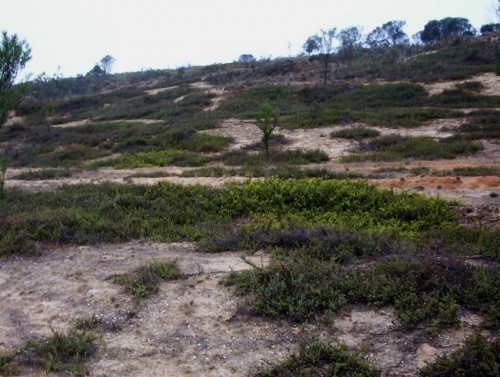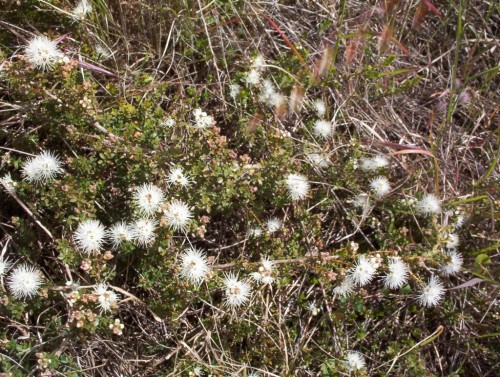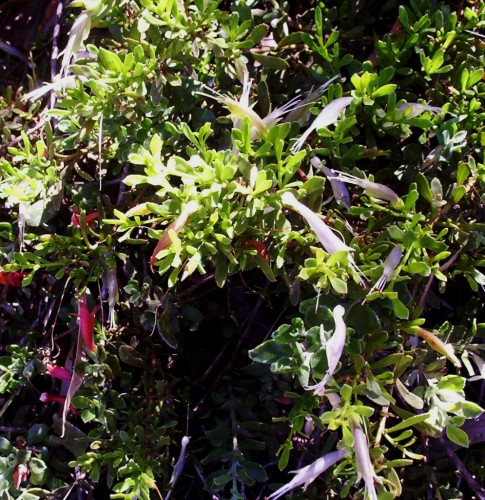Kunzea pomifera (Muntries) In The Scrub
The photo shows some of the Kunzea pomifera (Muntries), that grow in this area. There were acres of the plants. The green patches on the ground are patches of Muntries. Very few weeds grow in the patches, just the occasional grasses. There were still berries on the plants and they were sweet to eat. I was surprised that the birds had not got to them all.
Kunzea pomifera (Muntries) As Bush Tucker
A few weeks ago the local green grocer had a plate of Muntries for customers to sample. They had small punnets of the berries (like those in which strawberries are packed and sold) to sell. This is the first time I had seen them in the fresh fruit market. The berries were quite large compared to the ones I had picked out bush. I know some selecting had been done to find plants yielding larger fruits. The problem is that the sweet apple-like flavour was missing completely. I was not impressed with the larger fruit as they had a floury texture.
Why is it that people are content with a loss of flavour for the sake of larger fruit and therefore the economic advantages associated with handling? The same thing has been happening to tomatoes for years. It was certainly doing a diservice to what is a delicious small fruit.
There is another article I have written about Muntries here.
Eremophila veneta (metallica) and Birds
Eremophila veneta is a hardy ground covering plant with silver and green flowers. It grows to about 15-30cm tall by 1-1.5m wide. It thrives in a dry, hot position with good drainage.
I am sure that the Shingle Back Lizards find the water in the bird bath which is on the ground in the same way. I have watched them walk quite a distance in a very purposeful manner, heading in a direct line for the dish.
More information can be found here.
Eremophilas (Emu Bushes) and Birds
The antics of the New Holland Honeyeater are amusing. There is a daisy bush growing beside this plant and it has light twiggy growth low down in the bush. The New Holland Honeyeaters hang by their claws like a trapeze artist to reach their beaks and long tongues into the flowers. Then they decide that it is just as easy to get at the nectar by hopping all over the plant as the other species do.
This particular plant has made roots along some stems and in doing so collects more moisture. The Eremophila glabra forms are all very hardy but like all plants appreciates water during mid summer. We had 33mm (about an inch and a quarter) rainfall last weekend and everything has perked up even though this rain was sopped up by the ground very quickly.
More information about Honeyeaters can be found at Trevor’s Birding.
Disphyma crassifolium (Rounded Noon-Flower)
The leaves seem to take on the reddish hew when it is in a dry position.




